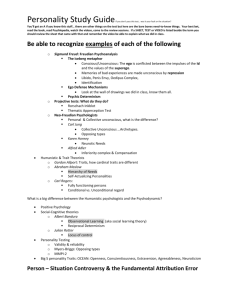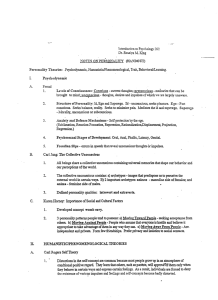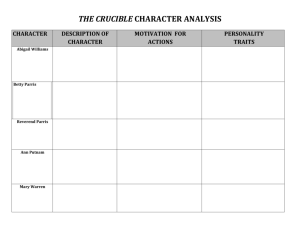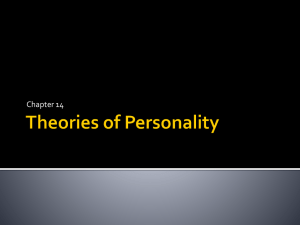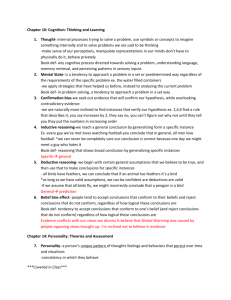Slide 1
advertisement
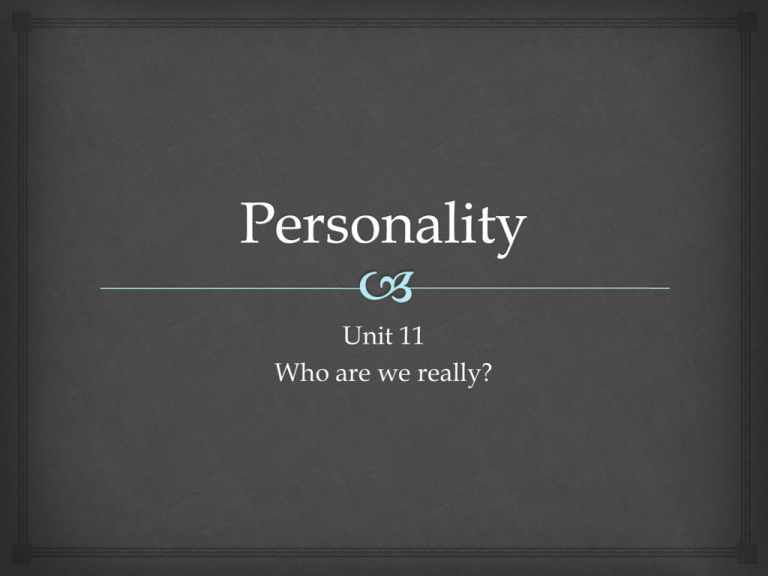
Unit 11 Who are we really? The Psychodynamic Perspective -Sigmund Freud: Psychoanalytic Theory -Basics of psychoanalytic theory -Human has sexual (and aggressive) instincts – for survival -These inborn forces must be balanced with needs of society -Psychoanalytic theory created to explain how this balance is achieved -Levels of consciousness -Mind is like an iceberg; most of mass lies out of range of visible detection - Contains three parts -Conscious – present awareness (tip of iceberg we can see) -Preconscious – stores past experiences and learning (easy to access) -Unconscious – primitive impulses, unacceptable desires, disturbing past experiences (the iceberg mass under the water that we cannot see); not easy to access The Psychodynamic Perspective -The structure of personality – consists of three mental entities -Id -At the unconscious level -Only psychic structure present at birth -Contains animal drives and impulses -Functions based on pleasure principle without regard to others -Ego -Forms during the first year of life -Realize not all desires can and will be satisfied right away -Learns to deal with frustration -Operates according to reality principle -Superego -Internal moral guardian -3-5 years of age -Most of superego is unconscious as well – some in pre and conscious -Ego is the balancer of the Superego and Id -Defense mechanisms -Prevent anxiety that would occur if unconscious content were in awareness -Repression – purposeful forgetting -Other defense tools: regression, displacement, denial, reaction formation, rationalization, projection, and sublimation Defense Mechanism Repression Rationalization Textbook Definition The ego pushes unacceptable impulses out of awareness, back into the unconscious mind. The ego replaces a less acceptable motive with a more acceptable one. Displacement The ego shifts feelings towards an acceptable object to another, more acceptable object. Sublimation The ego replaces an unacceptable impulse with a socially acceptable one. What is it in our own words? Personal Example to show you can apply it. 2 points Defense Mechanism Projection Reaction Formation Textbook Definition The ego attributes personal shortcomings, problems, and faults to others. The ego transforms an unacceptable motive into its opposite. Denial The ego refuses to acknowledge anxietyproducing realities Regression The ego seeks the security of an earlier development period in the face of stress. What is it in our own words? Personal Example to show you can apply it. 2 points -Stages of personality of development -Psychosexual stages – each relation to changes in libido -Focuses on different body parts -Oral stage – 0-18 months; mouth, sucking (smokers) -Anal Stage – 18 months – 3 years; fixation may make one either excessively fastidious or messy (anal-retentive: perfectionism, cleanliness or anal-expulsive: messiness or carelessness) -Phallic stage – 3-6 years; focus shifts to the phallic region. Males struggle with issues of masturbation as do females and when this is acceptable. Oedipal, Electra complexes; a lot of influence on personality -Latency stage – 6-12 years; sexual impulses dormant, focus is now on friendships, activities and new skills. -Genital Stage – puberty; desires are towards members of the opposite sex and typically boys will desire someone like Mom in ways and girls will desire someone like Dad in ways. -New Ideas in the Psychodynamic Theory on Personality -Carl Jung -Moved focus to current experiences instead of childhood experiences. -Focused more on conscious experiences. -Alfred Adler -Focus becomes the uniqueness of each person and their potential -Proposed the idea of the inferiority complex: that people are born feeling inferior and strive to be superior as the grow. -Karen Horney -Agreed with Freud that there was a strong influence on personality by unconscious thoughts, but moved away from sex and aggression and focused more on social and cultural factors. The Trait View -Believe that different traits create different personalities -Gordon Allport – Hierarchy of Traits: -Two types of traits: -Cardinal traits – Present in all aspects of personality -Phrase or idea that sums up a person -Central traits – influence behavior in most situations -Responsible, trustworthy, patient, competitive -Secondary traits – more superficial, only influence certain situations -Raymond Cattell: Mapping the Personality -Two basic levels of traits -Surface traits: can observe these traits (friendly, helpful, emotional) -Source traits: more deeply rooted in personality -16 personality factors (ENFJ, INTJ…) -The “Big Five” -Openness: imaginative, curious, nontraditional -Conscientiousness: reliable, responsible, hard-working -Extraversion: outgoing or reserved -Agreeableness: sensitive, warm, tolerant -Neuroticism: emotionally instable, very intense and worrisome Social Cognitive Perspective Social – Cognitive Theory - Learning-based model -Cognitive and environmental factors influence behavior -Locus of Control -Internal or external motivation
